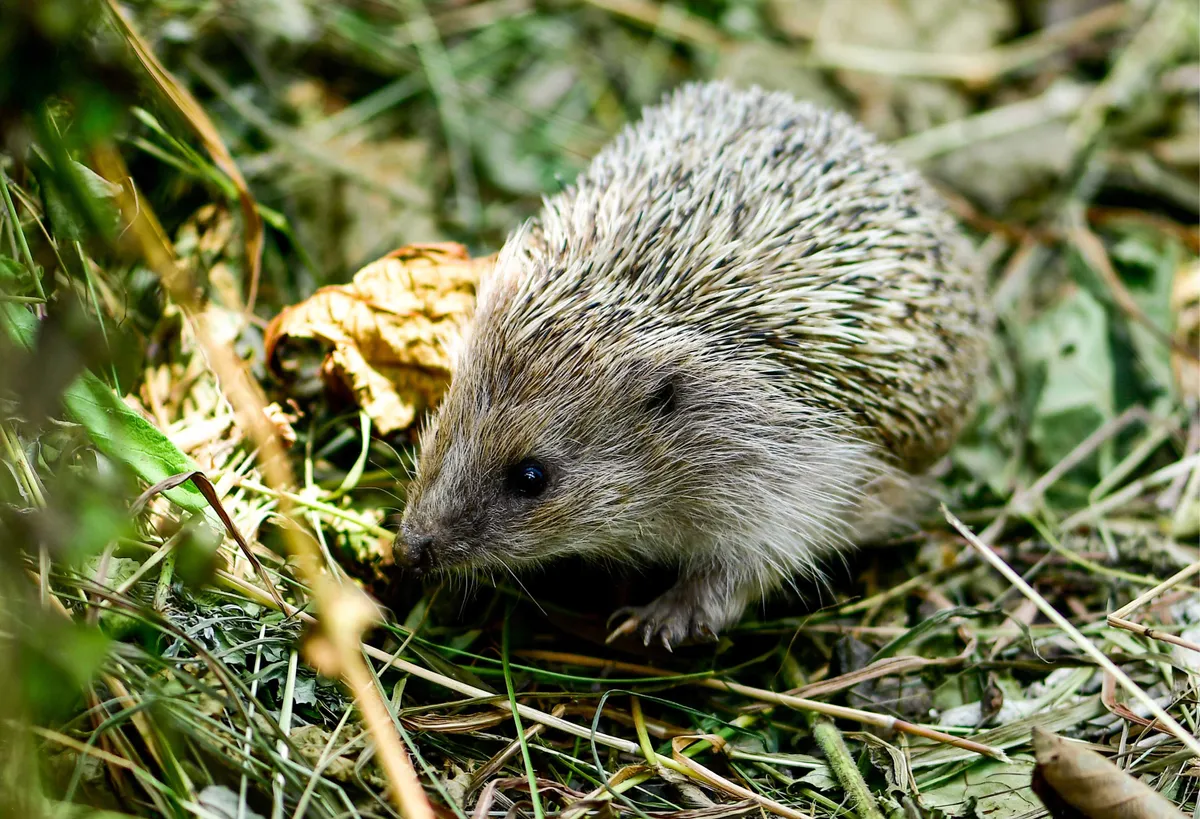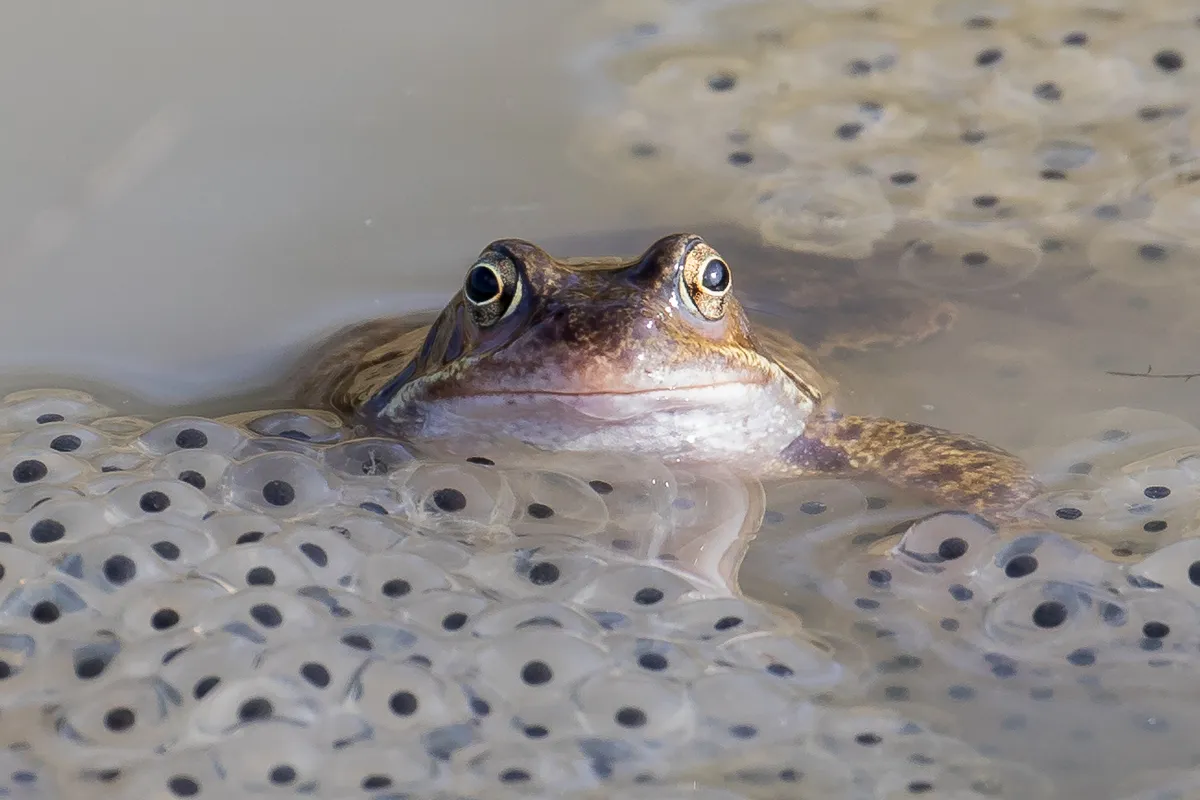Legends and folk stories are often treated as received wisdom, even by experienced enthusiasts of natural history. Amy-Jane Beer debunks popular misconceptions about British wildlife.
Water voles always live near water

Common perception, the watery connotations of the scientific name Arvicola amphibius and Kenneth Grahame's immortal portrayal of the genial Ratty all suggest that water voles could never be at home far from a river, canal, stream or pool. In fact, as a species they're rather adaptable.
While most of the water voles in Britain are semi-aquatic river dwellers, in Continental Europe these chubby rodents may spend their entire lives on dry land, living an underground, mole-like existence. This behaviour was hinted at in the species' former scientific name A. terrestris.
- Largest ever reintroduction of water voles in UK
- How to tell the difference between a brown rat and a water vole
To see burrowing, or fossorial, water voles in the UK, go to Jura, where the isolated population studied by researchers at Aberdeen University shows striking flexibility. These voles forage in extensive tunnels in the rich soils, on beaches and on rocky skerries.
An earthworm cut in half becomes two

Bisecting an earthworm out of idle curiosity is a pretty nasty thing to do. Emma Sherlock, curator at London's Natural History Museum and president of the Earthworm Society of Britain (yes, there really is one), confirms that you certainly wouldn't be doing the creature any favours, regardless of what you've heard about the worm's impressive powers of regeneration.
- Discover the flatworm that can survive being sliced up by a knife
- Masters of regeneration: these death-defying animals can regrow body parts better than Deadpool
Some so-called worms', such as the mostly freshwater species known as planarians, may be able to regenerate two new individuals from one cut in half, but for the humble Lumbricus of our gardens, the best possible outcome would be for the front half to survive.
The tail may wriggle a bit before it dies. It is possible that the 'two from one' myth may have been fostered by people misinterpreting writhing, mating pairs of earthworms as two recenly regenerated individuals.
A mute swan can break your arm with its wing

Who wasn't warned as a child of the folly of messing with a mute swan? The species is the largest of our native waterfowl, so territorial nesting pairs are quite intimidating, especially at eye level. But arm-breakers? To be honest, I rather doubt it.
Julia Newth, a research officer at the Wildfowl and Wetlands Trust, does, too. "If the aggressive displays of swans don't work, they use the hard leading edges of their wings to drive away a threat," she says. "They may be powerful enough to break a frail human limb, but there are few anecdotal accounts of this happening. Since mute swans often live near humans, it must be a rare occurrence."
Tawny owls call 'Toowhit-toowoo'

As children we are taught the call of the wise old owl. Later, if we stay interested in nature, we may learn that this is actually a call and response - a sharp contact call from the female (kewick) and a long, reassuring reply from the male (hoooo-hu-hu-hu-hoo').
But it's not quite that simple, as wildlife sound recordist Geoff Sample explains: "Both males and females utter the 'kewick' call, which doesn't always get a reply. And females also hoot - though their call is different to the pure sound of the male, sounding strained and hoarse in comparison."
Magpies steal shiny objects

When the Italian composer Rossini wrote his opera La Gazza Ladra (The Thieving Magpie), he was contributing to one of the most comprehensive defamations of character inflicted on any species.
Not only do many people, including a goodly proportion of wildlife lovers, detest magpies as murderous creatures of ill omen; it is also believed that they (and other members of the crow family) are incurable kleptomaniacs bent on furnishing their nests with whatever shiny trinkets catch their beady eyes.
True, like many other birds, magpies may pick up shiny or sparkly objects out of sheer curiosity. But should you be tempted to shin up a tree for a retaliatory raid on one of their conspicuous spherical nests - beware.
You're more likely to be rewarded with bruises than with pocketfuls of jewellery. Incidentally, another magpie myth - that the species causes songbird declines - was scotched by an in-depth BTO survey published in 2010.
You're never more than 6 feet away from a rat

This oft-quoted piece of anti-rodent scaremongering probably has its roots in I9th-century public health propaganda.
- How to tell the difference between a brown rat and a water vole
- They can't vomit, one is poisonous and another is as heavy as a newborn baby - 11 amazing rat facts you (probably) don't know
Unless every building is infested on every level, it is clearly nonsense, but endless repetition must have dulled us to its impossibility. Even a back-of-an-envelope calculation using a historical overestimate of brown rat numbers (40 million), the land area of the UK (243,600km*) and its current human population (62.6 million) produces figures of 257 people and 164 rats per square kilometre.
But most of us live in cities - as do a lot of rats - so does the adage apply there?
Dave Cowan of the Food and Environment Research Agency was asked to make the calculation for the BBC. Taking into account rats living in and around homes, commercial properties and in sewers, his best estimate for human-rat proximity in a UK city was 0-50m (0-164ft).
- What's the biggest rat in the world?
- Meet the world's deadliest rat, which has enough poison to kill an elephant
The mouse in your house is a house mouse

The house mouse is one of very few truly cosmopolitan species. It occurs on all seven continents, on remote islands, in mountain huts and in the deepest mines. And it reigns supreme in certain habitats - in the tunnels of the London Underground, for example. However, in Britain at least, the house party is over for this rodent. Modern homes are equipped with concrete floors and moulded window and door frames, so are less accessible than in the past.
Most of the current UK population of just under five million house mice is found on farmland. In suburban houses and gardens, the woodmouse is far and away the most abundant rodent, followed by the bank vole, field vole and brown rat - all of which occasionally venture indoors in search of food and shelter, particularly when winter closes in.
All bats roost upside-down

Wildlife enthusiasts worth their salt already know that there is no truth in the stories that bats can't see and that they get tangled in your hair. But when asked how bats sleep, many of us would probably say upsie down, hanging by their feet.
Yet this is invariably true for only two British species – the greater and lesser horseshoes, which dangle like ripe plums, snugly wrapped in their delicate wings.
For Britain's other 16 species, resting positions are variable. Many of them roost wedged in small crevices at whatever orientation the available space dictates; some, such as the brown long cared bat, cling more or less upright to roost surfaces, using both their toes and tiny hooks on their wings.
Hedgehogs should be fed bread and milk

The UK's national wildlife treasure that is the hedgehog attracts more than its share of myths. The most popular is the well-intentioned idea that hedgehogs should be fed bread and milk. "They do love it," says expert Hugh Warwick, "but then my kids love sweets! It's not good for them. Hedgehogs are carnivores. They need lots of fat and protein, so bread is little use - plus they are lactose-intolerant." The recent long winter put additional strain on our already beleaguered population.
Supplying meaty food and fresh water will make a real difference.
Other hog myths include tales of them collecting fruit on their spines and stealing milk from sleeping cows. Hugh explains that legend: "Reclining cows can leak milk, and a hedgehog may lap up the spillage, and look guilty when interrupted." Nor are hedgehogs immune to adder venom - their ability to kill one is down to their spines being longer than the serpent's teeth.
Earwigs lay eggs in human ears

Female earwigs lay their eggs and tend their young in nests underground or in snug crevices. The greasy, grimy interior of a human ear wouldn't appeal to these fastidiously clean mothers, but this is not to say that if you were to lie in a field or on a woodland floor for a while, a questing earwig would never crawl in briefly to check out your nice, warm auditory orifices.
Frogs can't breathe underwater

This myth falls foul of the inconvenient truth that our frogs spend several months at a time underwater while hibernating, usually in mud at the bottom of ponds. Out of water, they may breathe actively, drawing in air via their nostrils and pumping it into their lungs with a bellows action of the floor of the mouth.
But, in both air and water, these amphibians also exchange oxygen and carbon dioxide across their moist, delicate skin, which is permeable to water and gas molecules, Blood circulating in abundant capillaries just below the surface transports respiratory gases to and from the rest of their bodies.




